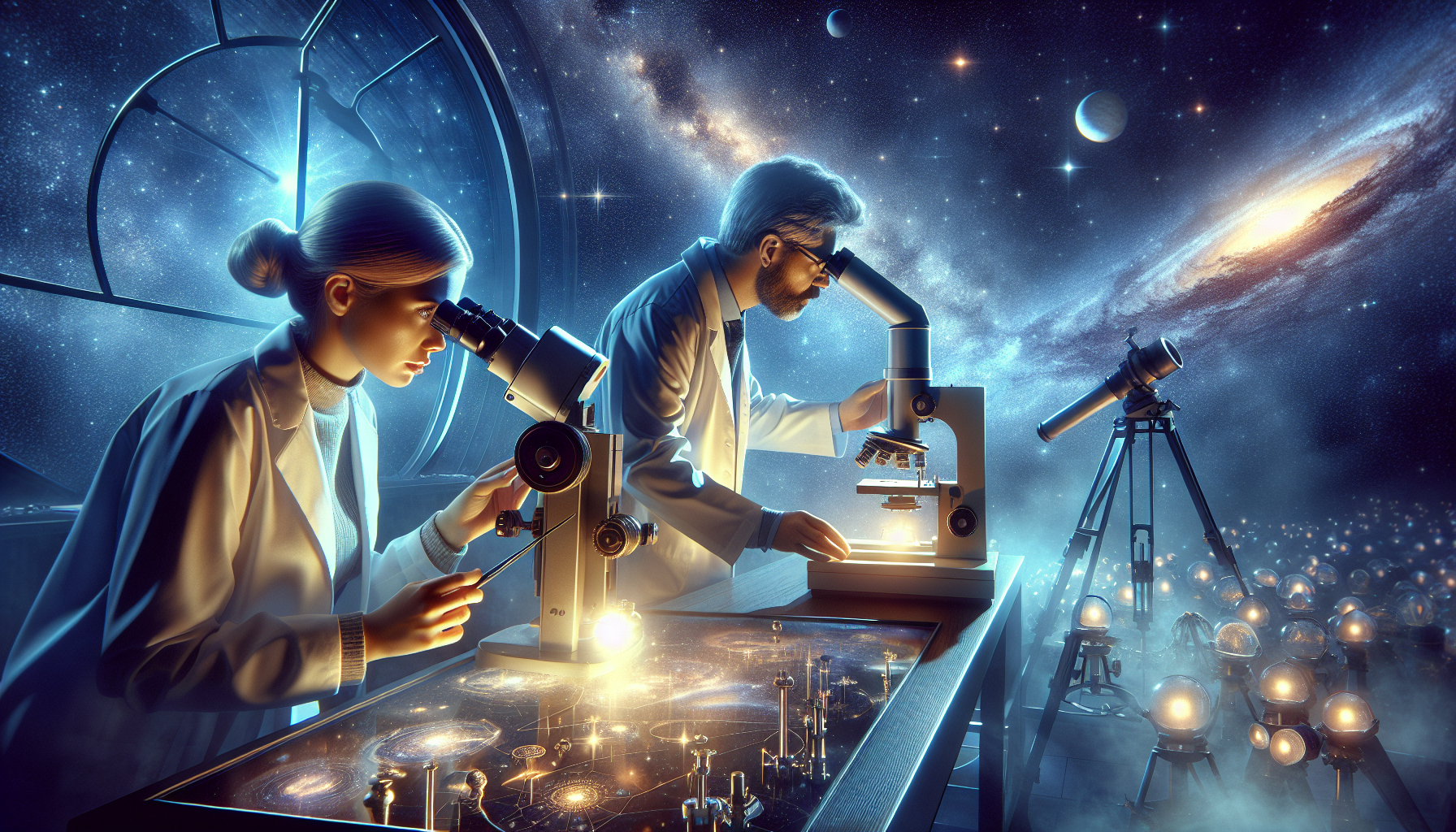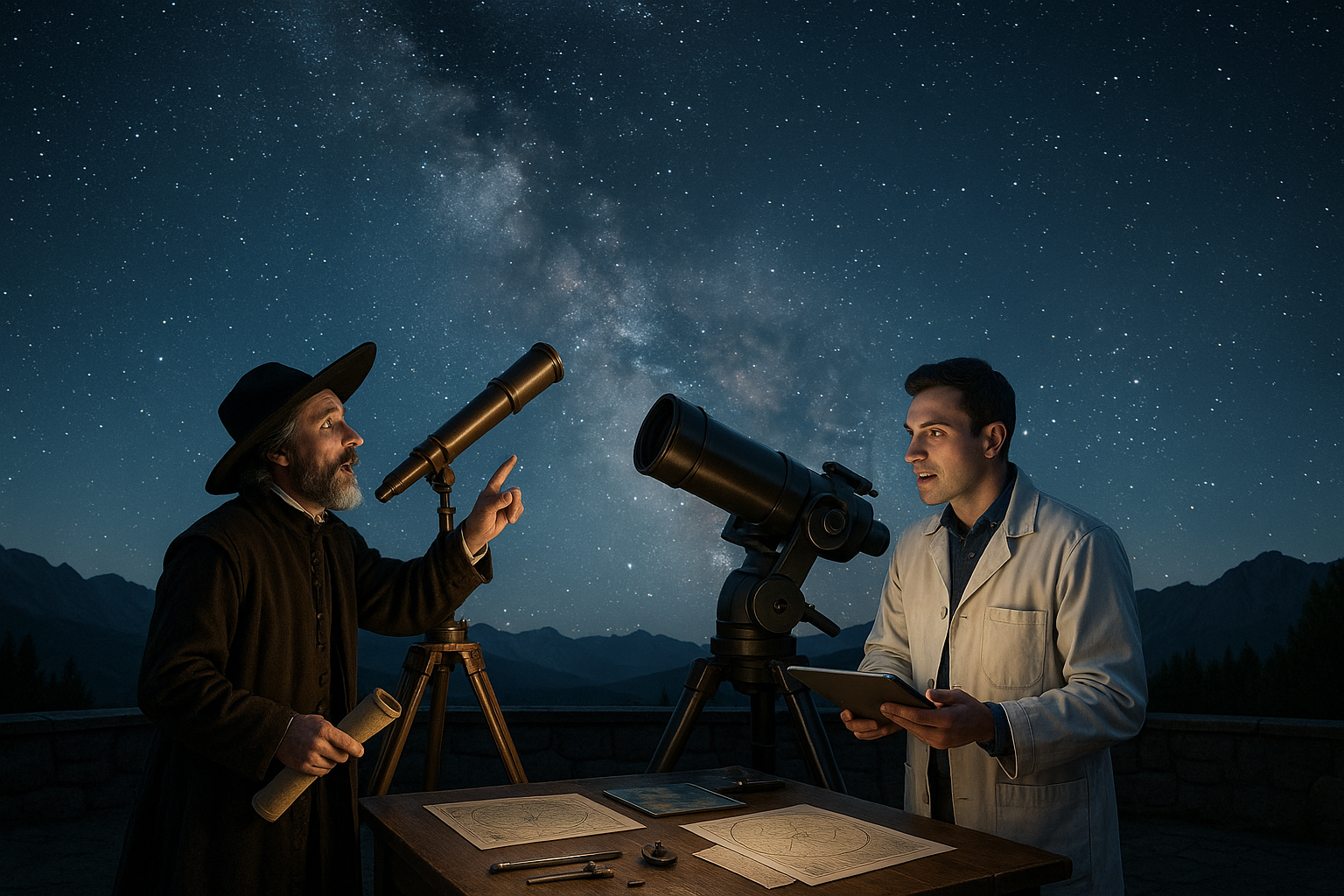In the grand tapestry of the universe, every thread is woven with a complexity and beauty that has fascinated humankind for millennia. The night sky, with its shimmering stars and enigmatic celestial bodies, has been both a source of wonder and a wellspring of scientific inquiry. But beyond the awe-inspiring visuals lies a deeper story—one that intertwines the cosmic dance of astronomy with the intricate art of metallurgy. This story reveals how the timing and composition of metals in the universe influence everything from the birth of stars to the formation of planets. Welcome to the fascinating exploration of how these two seemingly disparate fields unlock the secrets of the cosmos.
Astronomy, the study of celestial objects and phenomena, has always been a beacon guiding our understanding of the universe. Its roots run deep in history, with ancient civilizations mapping the stars and planets to navigate the earth and their destinies. Meanwhile, metallurgy, the science and technology of metals, might appear as an unlikely partner in cosmic exploration. Yet, it is the very essence of metals that holds keys to our cosmic understanding. Metals are born in the hearts of stars through nuclear fusion, and their distribution throughout the universe is a testament to the life cycles of stars. These elements, forged in stellar furnaces, play crucial roles in the development of celestial bodies and the emergence of life itself.
As we delve deeper into this article, we will explore the profound connections between astronomy and metallurgy. We will examine how the life and death of stars contribute to the cosmic abundance of metals and how these elements shape the structure and evolution of galaxies. Furthermore, we will investigate the role of metals in the formation of planets and the potential for life. By understanding the intricate timing and distribution of these elements, we gain insights into the past, present, and future of the universe. 🔭✨
Join us on this cosmic journey as we unlock the secrets of the universe, revealing how the timing of stellar events and the properties of metals shape everything we know about the cosmos. From the fiery crucibles of supernovae to the tranquil realms of planetary formation, we will uncover how these processes interweave to create the complex and dynamic universe we are a part of. Whether you are a seasoned astrophysicist or a curious stargazer, this exploration promises to illuminate the celestial mechanics that govern our universe and perhaps even inspire a renewed sense of wonder about our place among the stars.
The Interplay Between Astronomy and Metallurgy
In the grand tapestry of the cosmos, few relationships are as intricate and fascinating as that between astronomy and metallurgy. While at first glance these fields may seem disparate, they are inextricably linked through the very fabric of the universe. This relationship is not just one of scientific curiosity but also a profound narrative of how the elements forged in the heart of stars become the building blocks for technology and civilization.
Astronomy provides us with a window into the vast expanses of the universe, enabling us to observe the birth and death of stars, galaxies, and other celestial phenomena. Through these observations, we have learned that stars are the forges of the universe, synthesizing heavier elements from hydrogen and helium through the process of nuclear fusion. These elements, once expelled into space through supernovae, become part of the cosmic dust that eventually coalesces to form planets, moons, and even life itself.
Metallurgy, on the other hand, is the art and science of extracting and manipulating metals, a field that has been crucial in the development of human civilization. From the Bronze Age to the Iron Age, the discovery and use of metals have transformed societies, enabling advancements in tools, weapons, and infrastructure. But the connection between metallurgy and the cosmos goes deeper than the mere utility of metals. It is a testament to the interconnectedness of all things, as the same processes that create stars also provide the raw materials for our technological advancements.
The Cosmic Origin of Metals
To understand the relationship between astronomy and metallurgy, we must first delve into the cosmic origins of metals. In the early universe, only the lightest elements, hydrogen and helium, were present. The first stars, composed primarily of these elements, initiated the process of nuclear fusion, creating heavier elements in their cores. These stars, upon reaching the end of their life cycles, exploded in spectacular supernovae, dispersing their enriched contents into the cosmos.
This process, known as nucleosynthesis, is responsible for the creation of all elements heavier than helium, including those vital for metallurgy such as iron, copper, and gold. It is through the death of stars that these metals are scattered across the universe, eventually becoming part of the planetary bodies that form from the remnants of stellar explosions.
The table below illustrates the process of nucleosynthesis and the resulting elements:
| Process | Elements Created |
|---|---|
| Big Bang Nucleosynthesis | Hydrogen, Helium, Lithium |
| Stellar Nucleosynthesis | Carbon, Oxygen, Nitrogen |
| Supernova Nucleosynthesis | Iron, Nickel, Heavy Elements |
The Role of Metallurgy in Human Advancement
As humanity evolved, the manipulation of metals became a pivotal factor in the advancement of civilizations. The ability to extract and refine metals from ores led to significant technological and cultural shifts. Metallurgy enabled the creation of stronger tools and weapons, facilitating agriculture and warfare, which in turn shaped the course of history.
One of the earliest known applications of metallurgy was during the Bronze Age, a period characterized by the widespread use of bronze—a metal alloy consisting primarily of copper and tin. This era marked a significant leap in technological innovation, as bronze tools and weapons were far superior to their stone counterparts. The transition to the Iron Age further revolutionized societies, as iron’s abundance and strength made it the material of choice for a wide range of applications.
However, the impact of metallurgy extends beyond mere utility. The study of metals has also provided insights into the properties and behaviors of materials on a microscopic level. By understanding the atomic structure and bonding of metals, scientists and engineers have been able to develop new alloys and materials with tailored properties, further pushing the boundaries of what is possible in fields such as construction, transportation, and aerospace.
Watch this enlightening video on the history of metallurgy and its impact on civilization: “The Story of Metals: From Bronze to Steel” – Science Channel.
The Astrophysical Connection to Metallurgy
The link between astronomy and metallurgy is not limited to the cosmic origin of metals. Modern astronomical research often relies on metallurgical principles to develop the tools and instruments necessary to observe and analyze the universe. Telescopes, spectrometers, and other observational equipment are often made from specialized metal alloys designed to withstand the harsh conditions of space and provide the precision required for astronomical measurements.
Moreover, the study of meteoritic materials, which are remnants of asteroids and comets, provides unique opportunities to investigate the properties of metals and alloys that formed in the early solar system. These extraterrestrial samples offer clues about the processes that shaped our solar system and the distribution of elements within it.
The table below compares the composition of Earth-based metals to those found in meteoritic samples:
| Element | Earth Composition (%) | Meteorite Composition (%) |
|---|---|---|
| Iron | 5.0 | 95.0 |
| Nickel | 0.005 | 4.0 |
| Cobalt | 0.002 | 0.5 |
Innovations Driven by Astronomy and Metallurgy
The symbiotic relationship between astronomy and metallurgy continues to drive innovation in both fields. The demands of space exploration, for example, have led to the development of advanced materials capable of withstanding extreme temperatures and radiation. These materials not only improve the durability and performance of spacecraft but also have terrestrial applications, such as in the construction of buildings and bridges.
One of the most notable innovations is the development of shape memory alloys, which have the ability to return to their original shape after deformation. These alloys have applications ranging from medical devices to aerospace engineering, showcasing the versatility and potential of metallurgical advancements.
Furthermore, advancements in telescope technology, driven by metallurgical innovations, have opened new windows into the universe. Large, ground-based telescopes and space observatories equipped with cutting-edge metal-based technologies have allowed astronomers to observe distant galaxies, study exoplanets, and explore the cosmic microwave background radiation, deepening our understanding of the universe’s origins and evolution.
The Future of Astronomy and Metallurgy Collaboration
As we look to the future, the collaboration between astronomy and metallurgy promises to yield even more groundbreaking discoveries and technological advancements. The exploration of other planets and moons within our solar system presents opportunities to study extraterrestrial geology and extract valuable resources. The development of sustainable space mining technologies could revolutionize the availability of rare metals on Earth, reducing the environmental impact of traditional mining practices.
In addition, the continued study of cosmic phenomena, such as neutron star collisions and black hole mergers, offers insights into the behavior of matter under extreme conditions, which could inform the development of new materials with unprecedented properties. These discoveries not only enhance our understanding of the universe but also pave the way for innovations that can benefit society as a whole.
As we continue to unlock the secrets of the cosmos, the partnership between astronomy and metallurgy remains a cornerstone of scientific progress. The pursuit of knowledge in these fields is a testament to humanity’s enduring curiosity and ingenuity, as we strive to unravel the mysteries of the universe and harness its potential for the betterment of our world.
- Explore the cosmic origins of metals and their impact on technology.
- Understand how metallurgy has shaped human advancement through history.
- Discover the innovations driven by the interplay between astronomy and metallurgy.
For a deeper dive into the relationship between astronomy and metallurgy, check out this fascinating video: “Metals from the Stars: The Astrophysical Connection” – Cosmic Wonders.

Conclusion
Unlocking the secrets of the cosmos has long fascinated humankind, driving us to explore the vastness of space and the intricate details of the universe. Through the lens of astronomy and metallurgy, we gain invaluable insights into how celestial bodies and the materials composing them influence the universe’s evolution. In this article, we have journeyed through the fascinating interplay between these two disciplines, uncovering how they have shaped our understanding of the cosmos.
First, we delved into the role of astronomy in unveiling the mysteries of the universe. From the ancient stargazers who charted the movements of celestial bodies to modern astrophysicists using advanced telescopes, we have seen how astronomy helps us comprehend our place in the cosmos. The observation of stars, galaxies, and other celestial phenomena has not only expanded our knowledge of space but also sparked questions about the origins and future of the universe. 📡
On the other hand, metallurgy provides a closer look at the materials that make up celestial objects. By understanding the composition and properties of these materials, scientists can infer the processes that occur within stars and planets. Metallurgy has enabled us to understand the life cycle of stars, the formation of planets, and the distribution of elements across the universe. This understanding is crucial for developing technologies that can withstand the harsh conditions of space exploration.
Together, astronomy and metallurgy timing offer a comprehensive perspective on the dynamics of the universe. They reveal how elements are forged in the fiery furnaces of stars and distributed throughout the cosmos via stellar winds and supernovae. This cosmic recycling process underpins the very existence of planets and life as we know it.
The synergy between these fields also highlights the importance of interdisciplinary research in advancing our knowledge of the universe. As new technologies emerge and our understanding deepens, the collaboration between astronomers and metallurgists will continue to be essential in answering the fundamental questions about the cosmos.
In conclusion, the exploration of astronomy and metallurgy timing not only enriches our understanding of the universe but also inspires us to look beyond our immediate surroundings. It challenges us to think about our place in the grand scheme of things and the intricate web of interactions that shape our existence. As we unlock more secrets of the cosmos, we are reminded of the limitless possibilities that lie ahead.
We encourage you, dear reader, to reflect on the insights shared in this article and consider how you might contribute to the exploration of the universe. Whether through supporting scientific research, engaging in discussions, or simply sharing this knowledge with others, your involvement is vital. Let’s continue this journey of discovery together, inspired by the wonders of the cosmos. 🌌
Feel free to explore further on these topics through reputable sources like NASA’s official website or the European Space Agency. Keep the curiosity alive, and let’s embrace the infinite possibilities of the universe.
Toni Santos is a visual storyteller and cosmic interpreter whose work illuminates the ancient skywatchers and their prehistoric astronomy—the profound ways early humans observed and revered the heavens before written history. Through a visionary lens, Toni explores how the stars, planets, and celestial cycles shaped myth, ritual, and survival in cultures lost to time.
Rooted in a fascination with archaic observatories, stone alignments, and celestial symbolism, Toni’s creative journey reveals the deep human impulse to understand and harmonize with the cosmos. From lunar phases guiding planting seasons to the sacred paths of the Milky Way, each of his works embodies the awe and knowledge encoded in the night sky.
Combining artistic craftsmanship with archaeological insight, Toni’s pieces evoke the mystery and precision of prehistoric astronomers. His work does more than depict—it channels the timeless dance between earth and sky, bridging ancient wisdom with contemporary wonder.
As the visionary behind Vizovex, Toni shares curated visuals, essays, and symbolic studies that invite others to reconnect with the cosmic heritage written in stone and starlight. His creations are a call to look upward, to listen to the silent stories told by the stars, and to honor the first astronomers who mapped the heavens with reverence and ingenuity.
His work is a tribute to:
The celestial wisdom of prehistoric peoples
The sacred geometry of ancient observatories
The enduring bond between human culture and the cosmos
Whether you’re a stargazer, a scholar of ancient mysteries, or someone captivated by the universe’s earliest storytellers, Toni welcomes you to journey through a space where the sky is both map and myth—one constellation, one ritual, one revelation at a time.




